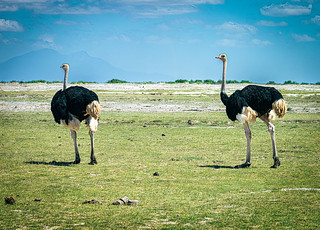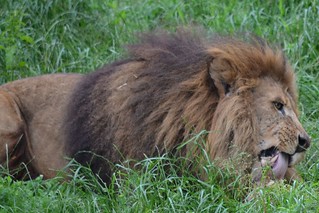The Albertine rift valley is the western part of the East African Rift Valley system. The rift valley is a result of a geographical land formation process called faulting. This extreme tectonic activity is distributed across different continents. The process led to the sinking of the earth’s crust forming depressions that were later filled by water hence the formation of the celebrated lakes.
This geographical changes through plate tectonism led to unique elevations that currently act as natural habitats for diverse wildlife. The elevation zones stretch from the glaciers at the top of the Rwenzori Mountains, down to the Alpine moorland, wetlands, lowland montane forests to savanna grasslands. Western Rift Valley sprawls across the borders of Uganda, the Democratic Republic of Congo, Rwanda, Tanzania, and Burundi.
Topographically the Albertine rift valley is characterized by mountains, hills, valleys, and escarpments. Some of the highlands in the Albertine region include the Rwenzori Mountains in Uganda, the Lendu plateau in northeastern Congo, the Virunga Mountains shared by Uganda, Rwanda, and Congo, and the Itombwe Mountains in South Kivu province in Congo. The Albertine Lakes are the longest, deepest, and oldest lakes in the Eastern Rift Valley and are often referred to as the central African lakes and they include.
Lake Tanganyika-Albertine Rift Valley Lakes
Lake Tanganyika is the second deepest lake in the world and the second largest freshwater lake in terms of volume and lies in the Albertine rift Valley system. This lake stretches across four countries, Tanzania, the Democratic Republic of Congo, Burundi, and Zambia.
Lake Tanganyika covers a total surface area of approximately 32,900 square kilometers, with a depth of 570m and a length of over418 miles from north to south. This lake is fed by water from different small rivers with river Ruzizi in the lead. River Ruzizi flows from Lake Kivu. The lake has a single outlet River Lukuga that drains in the Congo basin. This lake is believed to be one of the oldest water bodies in the world. It has a stable surrounding that has led to the development of diverse breeds of both animal and plant life.
Lake Tanganyika is home to over 300 fish species some of which are endemic thus making it a favorable ground for research. Some of the fish species in the lake include cichlid fish, sleek lates, sprat, and sardine-like dagga which have become a major source of income for the natives through fishing. In addition to fish, the lake houses more aquatic creatures like crocodiles, water cobras, molluscs, crustaceans, and many others. The lake also facilitates water transport across the counties where it lies. It is bordered by national parks that protect diverse wildlife and act as wonderful tourism attractions.
Lake Kivu-Albertine Rift Valley Lakes
This is another lake within the Albertine rift lying at the border between Rwanda and the Democratic Republic of Congo. This lake covers over 2700 square kilometers with a length of 90 kilometers, width of 48 kilometers (30 miles), and depth of 485 meters (1591 feet).
The existence of this lake is partially influenced by both faulting as it is part of the Albertine rift valley and volcanicity due to its proximity to the Virunga Volcanoes. In the deep waters of Lake Kivu are minerals like Methane and carbon dioxide which are used to generate electricity.
The scenic beauty of lake Kivu
The shores of the lake are endowed with beautiful sand beaches that provide luxurious activities like sunbathing, swimming, canoeing, windsurfing and water sports mainly found in Gisenyi, Kibuye, and Cyangugu towns. You can visit Lake Kivu as part of your itinerary from Volcanoes National Park after gorilla or chimpanzee tracking, from game drives in Akagera National Park, or Chimpanzee trekking in Nyungwe Forest National Park.
The lake is home to over 28 fish species, around the lake are 182 plant species, 52 invertebrate, 6 mammals, 6 reptile, and 5 amphibian species. In addition, several bird species can be seen on a boat cruise. Many people earn from the lake through fishing.
Lake Kivu is not only a source of livelihood through fishing but also a popular tourist destination on the islands. Some of the islands include Amahoro Island. Napoleon Island, Idjwi Island, Amizero Island, Iwawa Island, and many others. All the islands offer beautiful sceneries of the lake, and fishing, are a bird watcher paradise, and bring tourists to interact with the local community.
Since the laree is shared by two countries, management, and coordination of all the activities is done by the Kivu and Ruzizi Authority. This has helped to promote wildlife conservation, tourism, fisheries, and agriculture along the shores.
Lake Kivu is truly an essential natural resource though at risk of gas eruption which will prove a challenge to both human and environmental protection
Lake Albert-Albertine Rift Valley Lakes
Lake Albert is a naturally occurring fresh waterbody lying between Uganda and the democratic republic of Congo. This lake is a geological feature of the East African Rift Valley system. Lake Albert is the seventh largest lake in Africa with an area coverage of 5300 square kilometers, length of 160 kilometers, width of 30 kilometers, and depth of 51 meters. The lake draws most of its waters from the Victoria Nile that rises from Lake Victoria through Lake Kyoga to the north and River Semliki which later drains into Lake Edward to the south.
Lake Albert has a dramatic landscape that offers breathtaking views of the Rwenzori Mountain ranges in the south and rocky escarpments in the west. A section of the lake sits within the Kabwoya Wildlife Reserve and is host to wonderful wildlife like hippos, crocodiles, buffalos, waterbucks, oribi, duikers, waterbucks, and primates like monkeys and olive baboons.
Much of the wildlife can be seen when carrying out different tourism activities at the places surrounding the lake. Some of the activities include boat cruises, mountain biking, quad biking, fishing safaris, guided nature walks, and birding safaris.
The areas surrounding the lake have fertile soils suitable for agriculture with regions of dense forest. On the Uganda side of the lake are oil deposits that are undergoing exploration which is a recent development in the area.
Lake Edward-Albertine Rift Valley Lakes
This is the smallest lake in the Western Rift Valley located in the western part of Uganda in the Kasese district. This lake is shared by Uganda and the Democratic Republic of Congo. Uganda has 29% of the water surface coverage and 71% is in DRC. The average surface area of the lake is approximately 2325 sq km and has a depth of 112 meters (367 feet). It outflows into Lake Albert through river Semliki.
The original name for this lake was Rwitanzige before being renamed by the first European explorer Sir Henry Morton Stanley, who named it after the son of Queen Victoria who was called Prince Albert Edward. On the Uganda side, Lake Edward is connected to Lake George by the Kazinga Channel. This lake is part of two UNESCO heritage sites that is Queen Elizabeth National Park in Uganda and Virunga National Park in DRC.
Lake Edward is a wonderful habitat for different fish species and many aquatic animals. The banks of the lake are home to elephants, chimpanzees, crocodiles, and buffalos. Many migratory birds like the lesser flamingos are spotted on visits to the lake.
The most common activities enjoyed around the lake are boat cruises along the Kazinga Channel, fishing, and a guided nature walk in the vegetation close to the lake shores.
Lake George-Albertine Rift Valley Lakes
This is another great rift valley lake in western Uganda with an average depth of 2.4m this lake was named by the European explorer Henry Morton Stanley after King George V. Lake George has a total surface coverage of 250 square kilometers.
This lake is fed by different streams of water from Rwenzori Mountain ranges and drains into the neighboring Lake Edward connected by the Kazinga channel. The lake is a bird-watchers paradise, and the shores are suitable for nature walks and relaxation.
Boat trips and canoeing are the best ways to explore the lake as you feel the freshness of the cool waters and have sight of various wild and aquatic animals found in Queen Elizabeth National Park where the lake is found.
Other small lakes in the western arm of the East African rift Vally system are Lake Rweru at the border of Rwanda and Burundi and Lake Muhazi in Rwanda and Lake Kyoga in Uganda.
All in all, on your visit to Rwanda, Uganda, or DRC, tailor your itinerary to the Albertine Rift Valley lakes for the best wildlife, landscape, community visits, and relaxation on the beautiful sand beaches.
The popular safari packages along Albertine rift valley
3 Day Uganda bird watching vacation safari

The 3 Days Birding Tour takes you to Murchison Falls National park is Uganda’s biggest park, with about 450 bird species. The magnificent Murchison Falls offers wonderful scenery, characterized by hundreds of hippos
| TRIP DETAILS |
| REQUEST INFO |
10 Day Uganda birding vacation safari

Uganda is a very ideal bird watching safari destination with over 1000 different bird species that can be watched by all travelers interested in birding tours in Uganda. Take on the 10 Days Bird watching Safari to enjoy the best bird watching safari holiday Tours.
| TRIP DETAILS |
| REQUEST INFO |
10 Day Uganda & Rwanda vacation safari

The 10 Days Uganda Rwanda Gorilla and Wildlife Tour starts and ends in Kampala. It will take you to Uganda’s un-spoilt wildlife destinations to experience Nature at its best. Explore all the best Uganda has to offer to tourists in the tropic Africa. Major tour activities in this tour
| TRIP DETAILS |
| REQUEST INFO |

